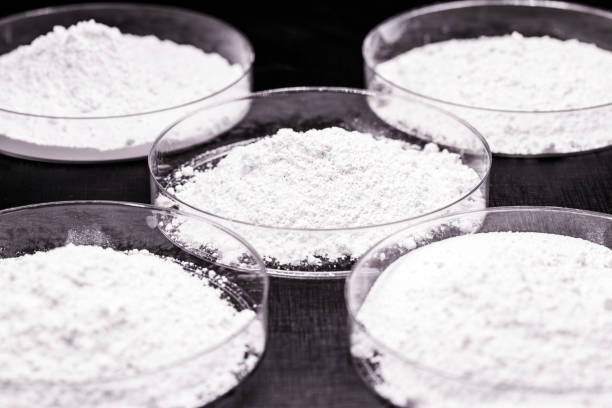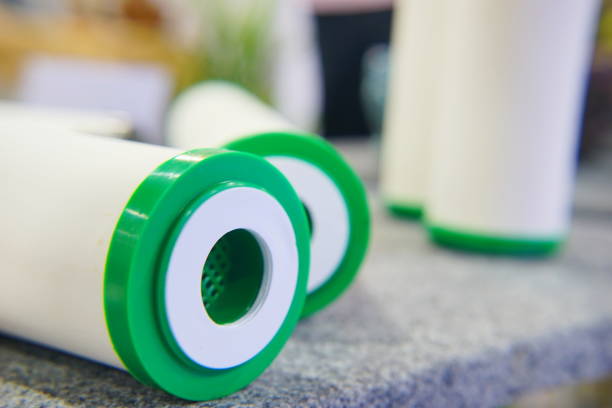When it comes to keeping your swimming pool clean and algae-free, adding phosphates to the water is a common practice. Phosphates feed algae and can help keep it at bay.
However, if you add too much phosphate to the water, you can end up with an algae problem anyway. So how do you know how much phosphate to add? One way is to test the water for phosphates. Here’s how:
What Are Phosphates? Why Should You Test For Them?
Phosphates are one of the three main nutrients that plants need to grow (the other two are nitrogen and potassium). Phosphates can come from a variety of sources, including animal manure, human sewage, and commercial fertilizers. When these materials enter water sources, they can cause an overgrowth of plant life.
This can lead to a number of problems, including decreased water quality, clogged waterways, and reduced oxygen levels in the water. To protect your water supply, it is important to test for phosphates on a regular basis. There are a variety of testing kits available at most hardware stores. By testing for phosphates regularly, you can help to ensure that your drinking water is safe and healthy.
How Does Phosphate Appear in Water?
Phosphates are minerals that occur naturally in water and soil. They are an essential part of plant and animal life, but they can also cause problems when they occur in large quantities. Phosphates can encourage the growth of algae and aquatic plants, which can lead to eutrophication.
This can decrease the amount of oxygen in the water, making it difficult for fish and other aquatic creatures to survive. Phosphates can also contribute to the spread of invasive species. Testing for phosphates is important to ensure that they are not present in high levels in your water supply. There are a number of ways to test for phosphates, including home test kits, which are available at most hardware stores.
If you find that your water has high levels of phosphates, you may need to take steps to remove them. This can be done by installing a phosphate filtration system or by using phosphate-removing chemicals.
Methods Of Testing For Phosphates In Water
There are a few different ways that you can test for phosphates in water. The most common method is to use a test kit, which is typically available at your local hardware store or online. Another option is to send a sample of your water to a testing lab. This is generally more accurate than using a test kit, but it can be more expensive.
Finally, you can also buy phosphate test strips, which will change color based on the level of phosphates present in the water. Whichever method you choose, it’s important to test for phosphates regularly, as they can build up over time and cause problems for your plants and aquatic life.
How To Interpret Phosphate Testing Results
Phosphates are an essential nutrient for plant growth, but too much phosphate in water can lead to harmful algae blooms. As a result, many states have regulations in place limiting the amount of phosphate that can be released into waterways. To test for phosphates in water, a sample must be collected and sent to a lab for analysis.
The results of the test will indicate the concentration of phosphate in the water. This information can then be used to determine whether or not the water contains an excess of phosphates. In general, a concentration of 0.1 mg/L or less is considered safe for swimming and other activities.
However, concentrations above this level may pose a risk to human health and the environment. Thanks to phosphate testing, we can keep our waterways clean and safe for everyone to enjoy.
How To Reduce The Amount Of Phosphates In Your Water
If you’re concerned about the amount of phosphates in your water, there are a few things you can do to test the levels and reduce them if necessary. First, you’ll need to purchase a phosphate test kit from your local hardware or home improvement store. Follow the instructions included with the kit to collect a sample of your water. Once you have your sample, simply follow the instructions to determine the phosphate levels.
If the test results show that phosphates are present in your water, there are a few things you can do to reduce the levels. One option is to install a phosphate filter on your home’s water supply line. These filters are relatively inexpensive and can be found at most hardware stores. Another option is to add phosphate-binding chemicals to your water.
These chemicals can be found at most pool supply stores. Simply follow the directions on the packaging to add the correct amount for your home’s water supply.
Benefits Of Reducing Phosphates In Your Water
Most people are familiar with the harm that phosphates can cause to their water supply. High levels of phosphates can promote the growth of aquatic plants and algae, leading to water pollution and decreased water quality. Phosphates can also contribute to the spread of invasive species, as they can provide a nutrient-rich environment for these organisms to thrive. As a result, there is a growing movement to reduce the amount of phosphates in our water supplies.
There are a number of ways to test for phosphate levels in your water supply. Home test kits are available from most hardware stores, and many public water suppliers also offer testing services. If you find that your phosphate levels are high, there are a number of ways to reduce them. One common method is to add a phosphate-absorbing material, such as bone char or activated alumina, to your water filter.
This will help to remove phosphates from your water before they have a chance to cause problems. You can also help to reduce phosphate levels by preventing runoff from entering your water supply. This can be done by landscaping with native plants and grasses, which will help to hold soil in place and prevent nutrients from leaching into waterways.
By taking these simple steps, you can
Clean Up Procedures After Testing
Cleaning up after a spill or release of unauthorized substances is important for many reasons. First, it protects people from being exposed to hazardous materials. Second, it prevents the spread of contamination. And third, it helps to prevent environmental damage. There are many different ways to clean up a spill, depending on the type of substance involved.
For example, oil spills must be cleaned up using a different method than cleaning up hazardous waste. Cleaning up a spill quickly and thoroughly is essential to preventing further contamination and protecting human health and the environment.
Can Water Filters Alleviate The Presence Of Phosphates In Water?
Can water filters alleviate the presence of phosphates in water? This is a question that many people have been asking lately. Phosphates are a chemical compound that can be found in many common household items, such as detergents, cleaning products, and even some types of food.
When these products are used, the phosphates can end up in our waterways, where they can cause algae blooms and other problems. While there is no easy solution to this problem, filtering your water can help to remove some of the phosphates before they have a chance to do any damage.
There are a number of different types of water filters on the market, so be sure to do your research before making a purchase. With a little effort, you can help to protect our waterways from the harmful effects of phosphates.
Where Can I Find Reliable Water Filters?
Phosphates are important to test for because they can be harmful to both the environment and human health. If you find that your water supply has high levels of phosphates, there are steps you can take to reduce them.
Aqua Ox Filters offers a variety of filters that can help alleviate the presence of phosphates in your water. Give us a call today to learn more!









